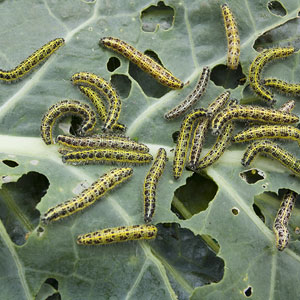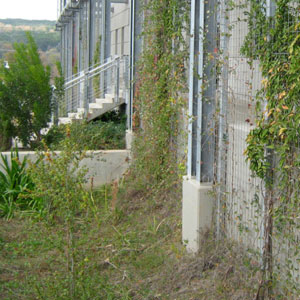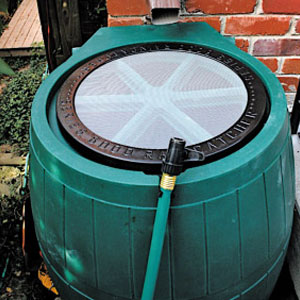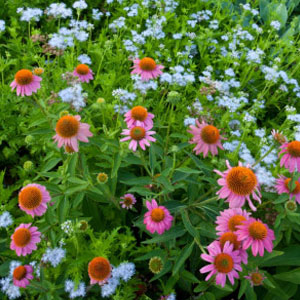


Avoid Invasive Species
Avoid Invasive Species Plants and the many environmental and human health benefits they provide are key elements of a sustainable landscape. However, it is important to note that some plants can also cause significant economic and environmental damage. An invasive...
Use Native and Adapted Plants
Use Native and Adapted Plants Native plants are defined as the species that exist in a region without human introduction. About 20,000 plant species are native to the United States, growing in an amazing range of habitats from the tropical rain forests of Hawaii to...
Select the Right Plants
Select the Right Plants When selecting vegetation for a sustainable garden, work with nature and choose plants adapted to the conditions of the site. These plants will minimize the need for fertilizers, pesticides and irrigation and reduce the chance of failure and...
Use Integrated Pest Management
Use Integrated Pest Management Integrated pest management, or IPM, is another commonsense approach to pest control that includes many of the techniques used by organic gardeners but does not rule out the use of synthetic pesticides as a last resort. Although it was...
Gardening for Wildlife
Gardening for Wildlife As wilderness disappears and the human-dominated landscape expands, butterflies, songbirds and other creatures are left without places to live. Douglas Tallamy, University of Delaware entomologist and author of “Bringing Nature...
Use Vegetation to Increase Energy Efficiency
Use Vegetation to Increase Energy Efficiency Houses use 22 percent of the energy consumed in the United States today. About half of this is for heating and cooling. A properly designed landscape can make a home significantly more energy efficient and reduce air...
Create a Water-thrifty Landscape
Create a Water-thrifty Landscape Irrigate only when plants need water. How often you water depends on a number of factors, including soil and vegetation type, whether or not the plants are established, the season, and weather conditions. Homeowners should avoid...
Use Alternatives to Municipal Drinking Water for Irrigation
Use Alternatives to Municipal Drinking Water for Irrigation With a little ingenuity, gardeners can use non-potable water from a variety of indoor and outdoor sources to irrigate their garden. Water that is non-potable is not safe for humans to drink but can be a great...

